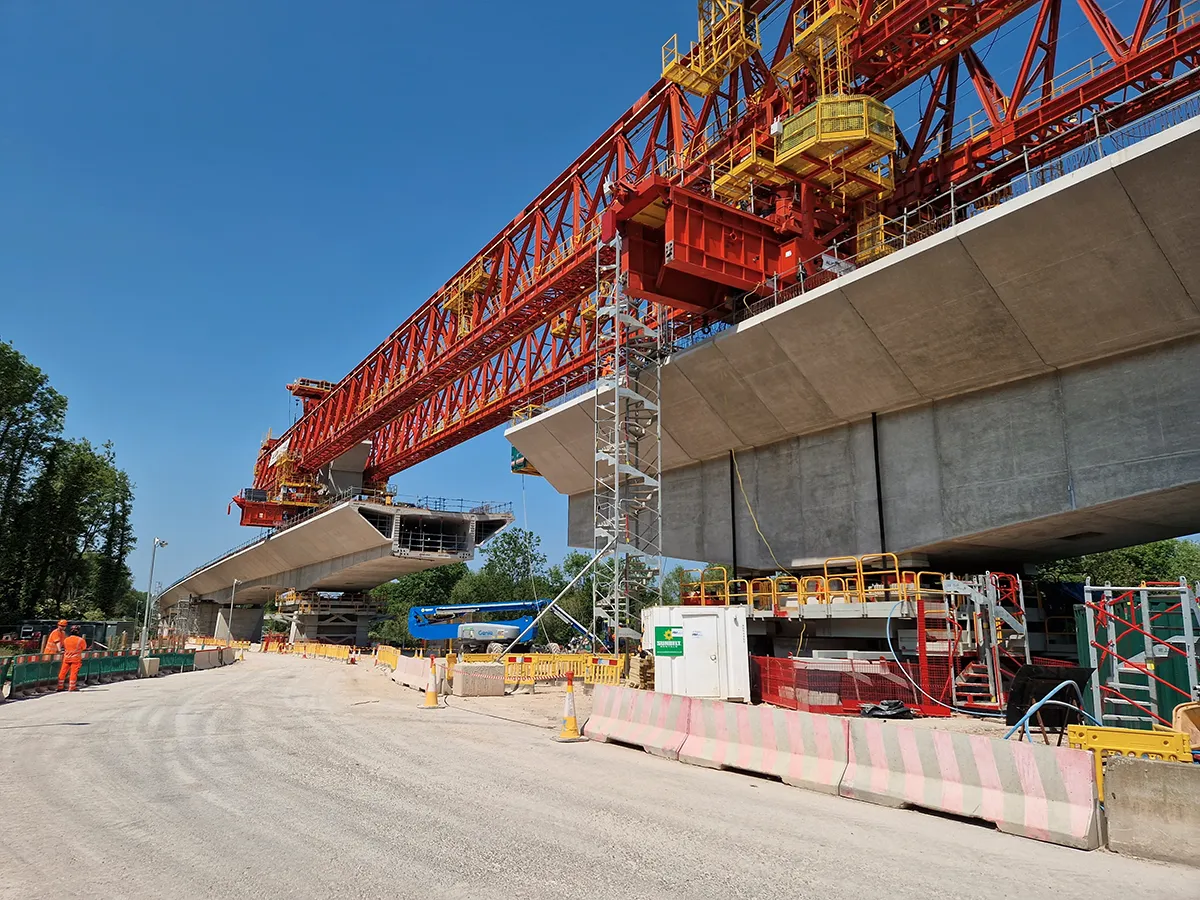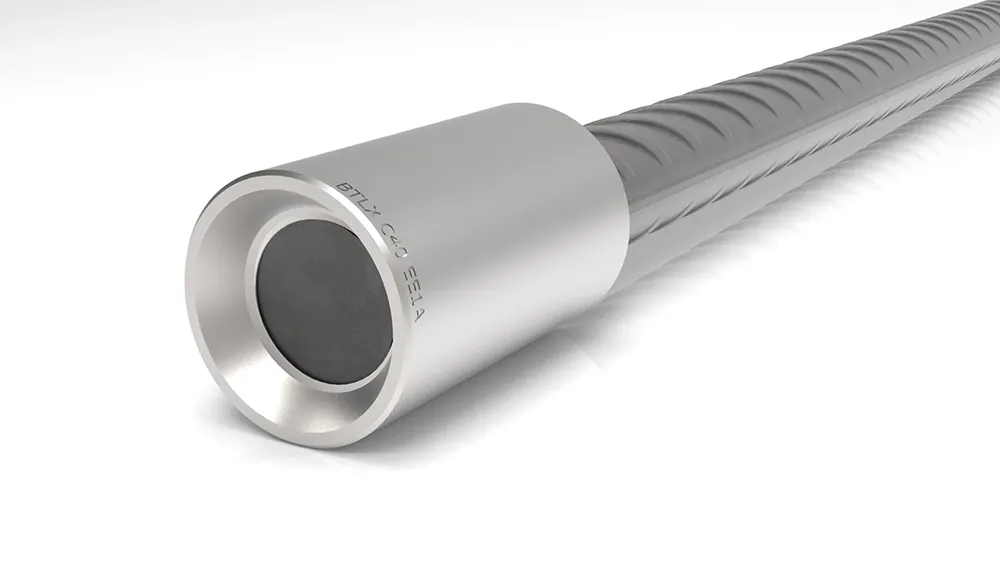HS2 is a major project designed to revitalize the UK. This ambitious initiative aims to transform the UK’s transport landscape, promising to revolutionize connections between England’s major cities and boost the national economy.
However, like many infrastructure projects of this scale, HS2 has had its share of challenges, revisions and adaptations over the years.
Initially designed to meet the growing demand for transport, the project has seen its scope evolve in the face of economic and environmental challenges.
What is HS2 ?
HS2 is a high-speed train line linking London to the Midlands and the North of England, with possible extensions to Scotland. The project will make transport between Birmingham and London easier, with zero-carbon journeys. HS2 will serve over 25 stations and connect around 30 million people.
The origins of the project
But why launch HS2?
To take a step back in time, it was in 2007 that the UK rail network underwent a major change. The opening of the High Speed 1 line between London and the Channel Tunnel. In 2009, the British government proposed HS2 to relieve congestion on the West Coast Main Line.
There were two main reasons for this :
- Improve the region’s rail capacity : The current rail network is often saturated
- Stimulate economic development : to boost the economies of the Midlands and the North.
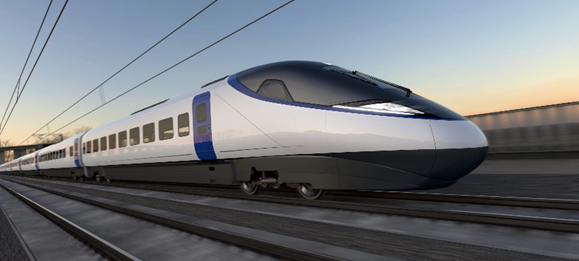
Source : www.latribune.fr
A complete team
The HS2 project calls on several major construction groups to build its various sections. Among them, the ALIGN consortium is playing a major role in the construction of section C1, located to the north-west of London.
The consortium is made up of :
- Bouygues Travaux Publics,
- Sir Robert McAlpine ,
- VolkerFitzpatrick.
The design was carried out by HS2 Ltd, with a team comprising :
- Eiffage
- Kier
- Ferrovial Construction
- BAM Nuttall
This 21.6 km section includes the Colne Valley Viaduct. Scheduled for completion in September 2024, it is now the longest viaduct in the UK, eclipsing Scotland’s Tay Bridge.
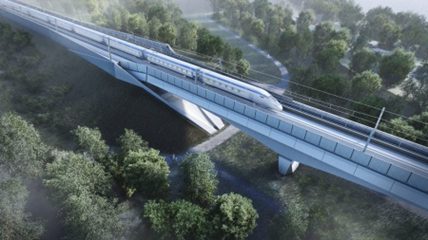
Source : www.hs2.org.uk
The consortium stands out for its commitment to the environment, having succeeded in reducing the project’s carbon emissions by 40% and reusing 3 million cubic metres of excavated earth to create a 127-hectare meadow.
An essential contribution from LINXION The Original
LINXION The Original is playing an important role in the HS2 project by supplying essential products. The company will contribute a total of 10,000 deflector tubes and over 120,000 couplers to the site. These components are essential to ensure the stability and durability of the railway structures, demonstrating the importance of LINXION The Original in the realization of this major infrastructure.
More than just a railroad
Jobs in spades and support for local businesses
The High Speed 2 (HS2) project is transforming the UK’s economic landscape. With the creation of 4,000 new jobs, we’re talking about a total of 28,500 positions supported thanks to this initiative. This is a real plus for the British job market.
Another interesting point is that 96% of the companies involved in the project are British. This clearly shows that the HS2 project aims to develop the economy and support local businesses.
A site that respects the environment
HS2 doesn’t stop there. The project is also helping to reduce its impact on the environment. Take the Thame Valley viaduct, where carbon emissions have been impressively reduced.
How was this achieved?
Thanks to an innovative construction method that favors in-plant rather than on-site manufacturing. This cuts emissions by a third compared with conventional techniques. It also makes for a cleaner building site and improves the quality of the materials used.
HS2 has decided to go even further by making 19 worksites completely diesel-free. It’s a great initiative that shows just how committed the project is to the environment.
HS2 joins the high-speed train race
A closer look reveals that HS2 is part of a well-established trend. Countries like France, Spain and Germany have already had efficient TGV networks since the 1980s. These modern infrastructures have proved their worth, bringing numerous economic and environmental benefits. The European Union has understood the importance of investing in modern rail infrastructure to improve connectivity and support sustainable development.
In France, for example, the TGV has not only reduced journey times between major cities, but has also stimulated economic development in the regions it serves. In Spain, the AVE network has considerably improved connectivity between Madrid and coastal cities, boosting tourism and trade. As for Germany, its ICE has strengthened links between the various “Länder”, contributing to better territorial cohesion.
With HS2, the UK is taking a major step forward and positioning itself as a key player in this field. In short, HS2 is not just a rail project; it’s a step forward for the future of transport in the UK. It promises to reshape the economic landscape and open up new opportunities for years to come.
The future of HS2
Despite these challenges, the HS2 project continues to move forward. The first phase between London and Birmingham should be operational in the early 2030s.
However, the future of future phases of the project has undergone significant changes. In October 2023, the second phase of the project, linking London to Manchester, was abandoned. The high-speed line will therefore stop at Birmingham.
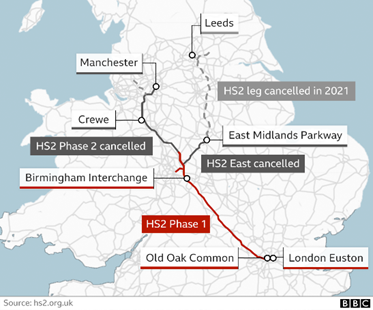
Source : www.bbc.com
This major decision to change the project was taken by the British government due to the rising costs of Phase 1, repeated delays in the timetable and changing travel habits since the COVID-19 pandemic. The planned section between Crewe and Manchester has been officially cancelled, although parts of the associated legislation have been reintroduced and could be used for other transport projects.
Following this announcement, a number of important changes have been made to the HS2 project :
- The high-speed line will now link London Euston to Birmingham Curzon Street, with a connection to the West Coast Main Line just north of Birmingham, enabling HS2 trains to reach cities in the north of England and Scotland on the existing rail network.
- The new HS2 station at Euston will be built, but not by HS2 Ltd. It will be built by a new urban development company.
- The construction schedule has been revised, with a projected date for the first HS2 services between Old Oak Common and Birmingham Curzon Street between 2029 and 2033.
Although the project has been scaled down, HS2 remains a key element in the modernization of the UK rail network. It aims to provide more track, more trains, more seats, more connections and faster journeys, while offering zero-carbon travel between Birmingham and London.
